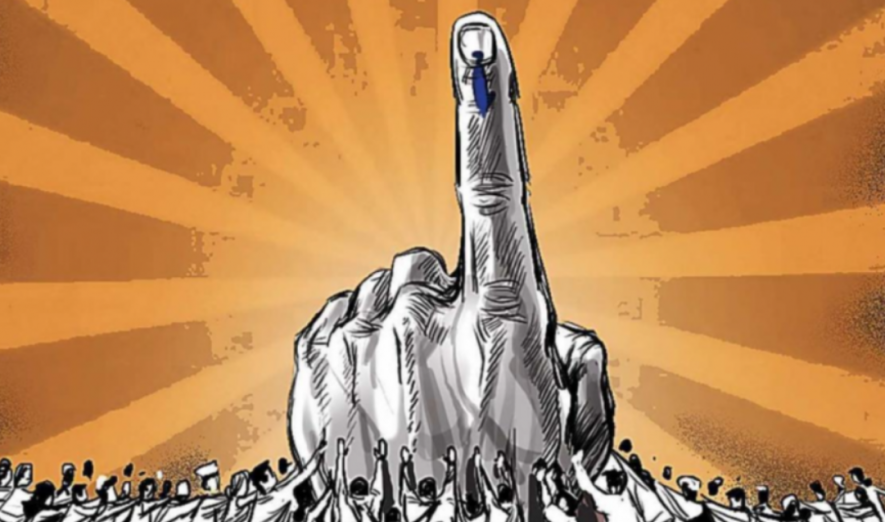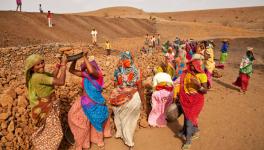Elections 2024: BATTLE for FUTURE of INDIA BEGINS

The Lok Sabha election process begins today (April 19) with 102 seats going to polls in the first phase of the seven-phase election. These elections will be witnessing a more or less direct fight between the BJP-led National Democratic Alliance (NDA) and the Opposition alliance called INDIA (Indian National Developmental Inclusive Alliance). Both have described the ongoing elections as crucial and historic – but for widely different reasons.
The BJP alliance is posing the election as not only a validation of its decade-long rule but also a mandate for its vision for the future. The Opposition alliance is vehemently arguing that the NDA policies till now have spelt ruin and immiserisation for the country’s poor and it also forsees an erosion of democracy and other constitutional values. The two sides, thus, represent drastically divergent views, making the election charged with long ranging implications.
Who Won These Phase 1 Seats Last Time?
Polling for phase 1 is spread – for reasons best known to the Election Commission and the powers that be – across 21 states. Among these, only one major state, Tamil Nadu, gets fully covered, that is, all 39 of its parliamentary seats go to polls on April 19. The rest of the 62 seats are scattered through southern Jammu & Kashmir, northern Rajasthan, northern Uttar Pradesh, eastern Madhya Pradesh, southernmost tip of Chhattisgarh, southern Bihar, all of Uttarakhand, and most of the eight states in the North-East, except Assam where only five of the 14 seats go to polls in this phase.
However, in many ways, this variegated polling scenario encapsulates most of the major concerns and issues that the Indian people are faced with. The political alliances also get an opportunity to woo their respective core bases and try to expand elsewhere, albeit in small measures.
In the outgoing Lok Sabha, NDA held 43 of these 102 seats while INDIA had 48 of them. Six seats were with other smaller parties not affiliated to either of the two alliances in 2019. Of the 35 seats in the Hindi heartland the BJP and its allies held 28 seats, a reflection of the dominant position it held in this crucial belt.
But, notably, of the eight seats in Uttar Pradesh that are now going to polls in phase 1, BJP held just three. All these eight seats are in the North-Western region. Apart from this belt, BJP and its allies held four of five seats in Maharashtra and all three in Bengal. BJP allies – Lok Janshakti Party, Janata Dal (United) and Shiv Sena (Shinde) four seats and various allies in Northeast held a seat each.
The Opposition alliance, INDIA, on the other hand, had 48 seats out of which 38 were in Tamil Nadu itself with the DMK-led alliance sweeping the state in 2019. In UP, of the eight seats going to polls in phase 1, two were won by Samajwadi Party, now part of INDIA bloc, while three were with Bahujan Samaj Party. Apart from this, in the Hindi belt, the Opposition alliance had only one seat each in Rajasthan, MP, Chhattisgarh.
The five seats going to polls in Assam were divided between BJP (4) and Congress (1). But since there has been fresh delimitation in Assam, it is difficult to extrapolate from these to the current five seats.
All Major Issues Are at Play
In the Hindi belt seats of the northern states, all ruled by BJP in state governments (in Bihar, as an ally), the BJP is banking on the Ram Temple issue, hoping to cash in on the consecration held earlier this year. In fact, many feel that the temple ceremony was hurried through because of the approaching elections. However, rather unexpectedly, the issue appears to have significantly faded from the minds of the electorate in so far as it being a voting choice determinant is concerned.
Surveys as well as reports from the ground appear to indicate that people may be happy to see the temple ready, but it is not swinging any sections afresh towards the BJP. It seems to have played a role in energising the activists and existing supporters – but that too is fast subsiding because of lacklustre response from the people.
Of course, everybody in BJP, from the Prime Minister downward, is invoking the Ram Temple in the campaign, not just in the Northern states but elsewhere too. Many feel that this focus on the temple actually represents a desperation on the part of BJP since it has not much to offer in terms of burning economic issues.
Notably, unemployment and price rise are looming as very big issues on the electoral horizon, as recently confirmed by the CSDS-Lokniti pre-poll survey. The BJP’s manifesto, which may be taken as a representing its official electoral platform, is singularly lacking on either any achievements on these fronts or on promises for the future. This is in sharp contrast to the reliance placed on jobs and inflation as the two failures of the previous UPA governments that the BJP harped upon incessantly in the past two elections.
Another major issue at play is farmers’ plight. While the year-long struggle of farmers in 2020-21 forced the BJP government at the Centre to withdraw the proposed three agriculture-related laws, the demand for guaranteed Minimum Support Price (MSP) at 50% more than the total or comprehensive cost (C2) as well as more procurement by government agencies, remains unfulfilled. In fact, procurement of major produce like wheat and rice has dropped steeply, leaving farmers at the mercy of private traders and companies. This issue, along with the crisis of indebtedness, continues to haunt the ruling party – and it does not have any answers.
The issue cuts across all the states but especially so in the ones where the farmers’ movement had a strong impact. In Phase 1 this is very likely to sway the large number of farmers-voters. It will continue to remain an issue in subsequent phases too.
The scattered nature of the Phase 1 polling, except in Tamil Nadu, Uttarakhand and the North-East, does not help visualise the common threads running through these elections, in this phase or the coming ones. These include the economic woes, the dangers of a high-handed government, the increasing use of religion and fanaticism in retaining power. The dream of ‘viksit bharat’ (developed India) riding on the statistics of GDP growth and stock market heights is unlikely to counter the harsh realities on the ground.
Get the latest reports & analysis with people's perspective on Protests, movements & deep analytical videos, discussions of the current affairs in your Telegram app. Subscribe to NewsClick's Telegram channel & get Real-Time updates on stories, as they get published on our website.























